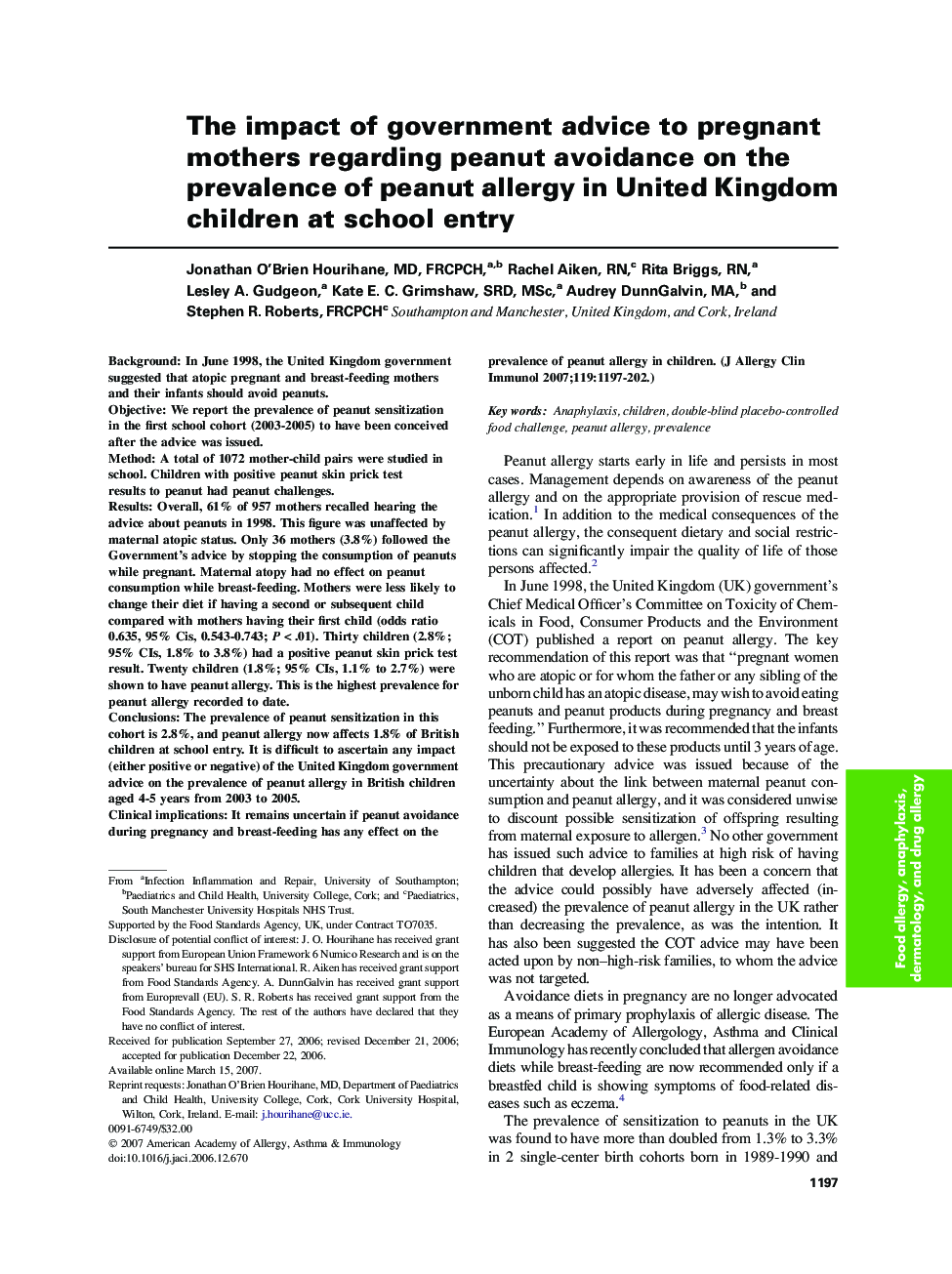| Article ID | Journal | Published Year | Pages | File Type |
|---|---|---|---|---|
| 3201799 | Journal of Allergy and Clinical Immunology | 2007 | 6 Pages |
BackgroundIn June 1998, the United Kingdom government suggested that atopic pregnant and breast-feeding mothers and their infants should avoid peanuts.ObjectiveWe report the prevalence of peanut sensitization in the first school cohort (2003-2005) to have been conceived after the advice was issued.MethodA total of 1072 mother-child pairs were studied in school. Children with positive peanut skin prick test results to peanut had peanut challenges.ResultsOverall, 61% of 957 mothers recalled hearing the advice about peanuts in 1998. This figure was unaffected by maternal atopic status. Only 36 mothers (3.8%) followed the Government's advice by stopping the consumption of peanuts while pregnant. Maternal atopy had no effect on peanut consumption while breast-feeding. Mothers were less likely to change their diet if having a second or subsequent child compared with mothers having their first child (odds ratio 0.635, 95% Cis, 0.543-0.743; P < .01). Thirty children (2.8%; 95% CIs, 1.8% to 3.8%) had a positive peanut skin prick test result. Twenty children (1.8%; 95% CIs, 1.1% to 2.7%) were shown to have peanut allergy. This is the highest prevalence for peanut allergy recorded to date.ConclusionsThe prevalence of peanut sensitization in this cohort is 2.8%, and peanut allergy now affects 1.8% of British children at school entry. It is difficult to ascertain any impact (either positive or negative) of the United Kingdom government advice on the prevalence of peanut allergy in British children aged 4-5 years from 2003 to 2005.Clinical implicationsIt remains uncertain if peanut avoidance during pregnancy and breast-feeding has any effect on the prevalence of peanut allergy in children.
